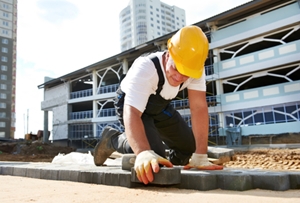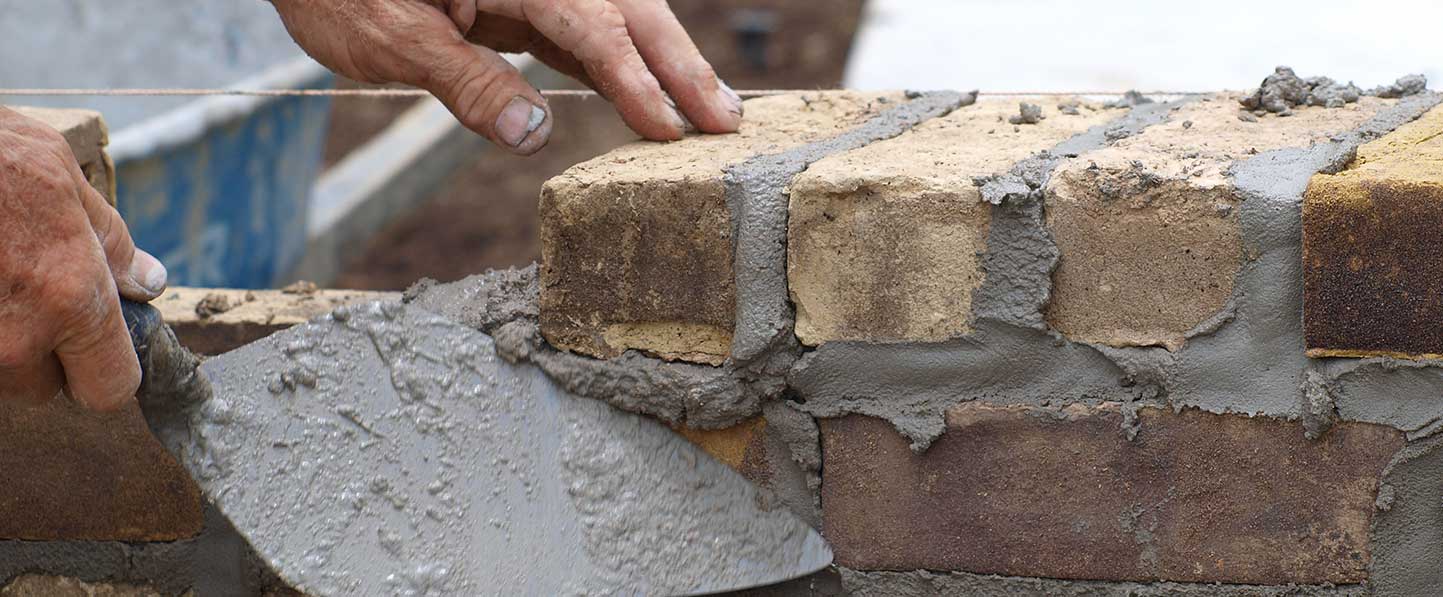Expert Masonry Contractor Services: Boost Your Building Today
Expert Masonry Contractor Services: Boost Your Building Today
Blog Article
Unlocking the Secrets of Sustainable Masonry Building And Construction Practices for Eco-Friendly Buildings
In the realm of modern-day construction, the pursuit of sustainable methods has actually come to be vital. Amongst the myriad strategies to green structure, lasting stonework construction attracts attention as a time-tested and resilient technique that holds a wide range of untapped potential. From the choice of materials to innovative building methods, the tricks to accomplishing sustainability within masonry building are diverse and appealing. By discovering the advantages, products, methods, and future patterns of lasting stonework, a much deeper understanding of just how these techniques can form the future of green structures arises.
Advantages of Sustainable Stonework Construction
Accepting lasting masonry building techniques not only minimizes environmental effect but likewise provides lasting financial advantages to builders and neighborhoods. By making use of materials like recycled bricks, obstructs, and rocks, builders can significantly decrease the carbon footprint of their jobs while advertising source performance. Furthermore, lasting stonework construction techniques, such as appropriate insulation and thermal mass residential or commercial properties, can boost power efficiency within buildings, causing lowered operational prices over time.
Additionally, the toughness and resilience of stonework frameworks add to long-term economic advantages. Structures constructed utilizing lasting stonework practices often need much less repair and maintenance, converting to set you back savings for home builders and property owners. The longevity of stonework products likewise guarantees that structures remain steady and protected, minimizing the requirement for regular remodellings or replacements.
Eco-Friendly Stonework Products
Using eco-friendly stonework products is an essential step towards boosting the sustainability of building practices and reducing environmental impact while maximizing long-lasting economic benefits. Lasting stonework products are sourced, created, and used in a manner that reduces overall environmental impact. Materials such as recycled blocks, reclaimed rock, and lasting cinder block are coming to be increasingly prominent selections for eco-conscious home builders. Recycled bricks, for instance, not just draw away waste from land fills yet likewise require much less energy to create compared to new blocks. Recovered rock provides an unique visual appeal while lowering the need for brand-new quarrying. Sustainable concrete obstructs integrate recycled aggregates and may feature better insulation properties, adding to power efficiency in structures.
Furthermore, natural materials like adobe, rammed earth, and straw bales give outstanding thermal mass residential properties, reducing the need for heating and cooling energy. These materials are commonly in your area readily available, promoting regional economies and lowering transportation-related carbon exhausts. By picking environmentally friendly masonry materials, construction jobs can substantially minimize their ecological impact and contribute to the creation of healthier, extra lasting developed atmospheres.
Energy-Efficient Masonry Methods
Energy efficiency plays an important role in enhancing the sustainability of stonework building and construction techniques. By carrying out energy-efficient masonry techniques, building contractors can dramatically lower the general energy intake of a structure, resulting in reduced functional important site expenses and a smaller ecological footprint. One essential energy-efficient masonry technique is making use of thermal mass, which includes integrating thick products like concrete or brick right into the structure's framework to absorb and store heat. This assists regulate interior temperatures, decreasing the need for mechanical home heating and cooling down systems.

Developments in Sustainable Masonry
Recent improvements in lasting stonework methods have actually caused ingenious strategies that are improving the building and construction industry. One such development is the advancement of self-healing concrete, which makes use of bacteria installed within the concrete to recover splits autonomously. This innovation not just lowers upkeep prices yet additionally improves the durability of masonry structures, adding to their sustainability.
One more remarkable innovation is using recycled accumulations in masonry building - masonry contractor. By incorporating materials such as smashed ceramic waste or recycled glass right into concrete blends, building contractors can minimize the environmental influence of building and construction jobs while preserving architectural integrity. This practice why not check here not just diverts waste from land fills yet also preserves all-natural resources, making it a vital improvement in lasting stonework construction
Moreover, the integration of electronic style devices, such as Building Information Modeling (BIM), is reinventing the way stonework structures are intended and constructed. BIM enables even more precise computations, reduced product wastage, and enhanced energy performance, ultimately leading to even more sustainable structure practices. These innovations jointly signify an encouraging future for sustainable stonework construction in the era of green buildings.
Future Trends in Masonry Sustainability
With the cutting-edge strides made in sustainable stonework practices, the future patterns in masonry sustainability are positioned to further reinvent the building sector. One of the vital patterns forming the future of masonry sustainability is the raised integration of modern technology. Improvements such as Structure Information Modeling (BIM) and digital reality simulations are being made use of to optimize stonework building and construction processes, bring about reduced material waste and improved power efficiency in buildings.
Furthermore, the advancement of unique sustainable materials is readied to play a significant function in enhancing the eco-friendliness of stonework building and construction. masonry contractor. Innovations like self-healing concrete, recycled aggregates, and bio-based binders are acquiring traction for their capability to lessen environmental influence while maintaining structural integrity

Conclusion
To conclude, sustainable stonework building and construction techniques provide numerous advantages for environmentally friendly structures. By using eco-friendly materials and energy-efficient strategies, masonry can add to a much more sustainable developed setting. Technologies in sustainable stonework are continuously being established to further boost the environmental efficiency of structures. Looking towards the future, the fad of masonry sustainability is expected to expand, leading to more eco friendly and energy-efficient building techniques in the years to come.
Report this page